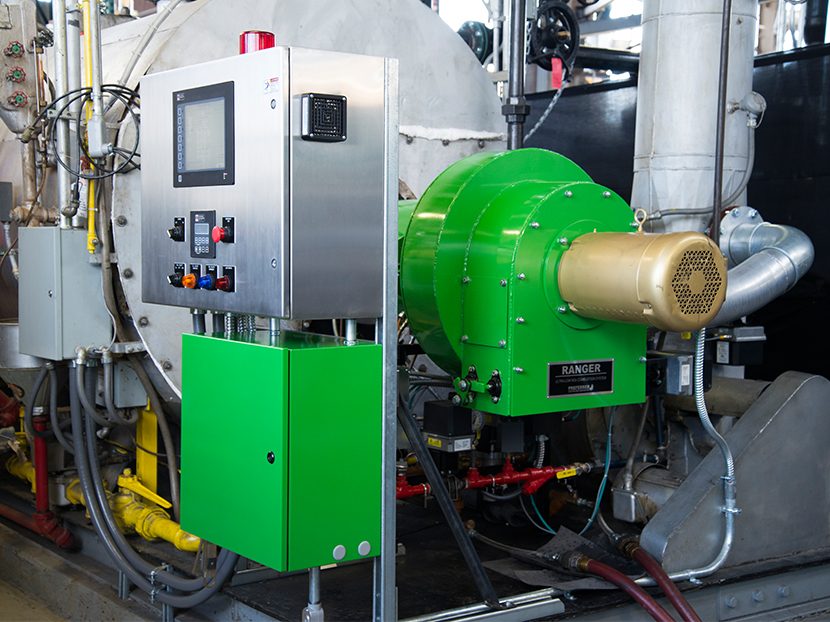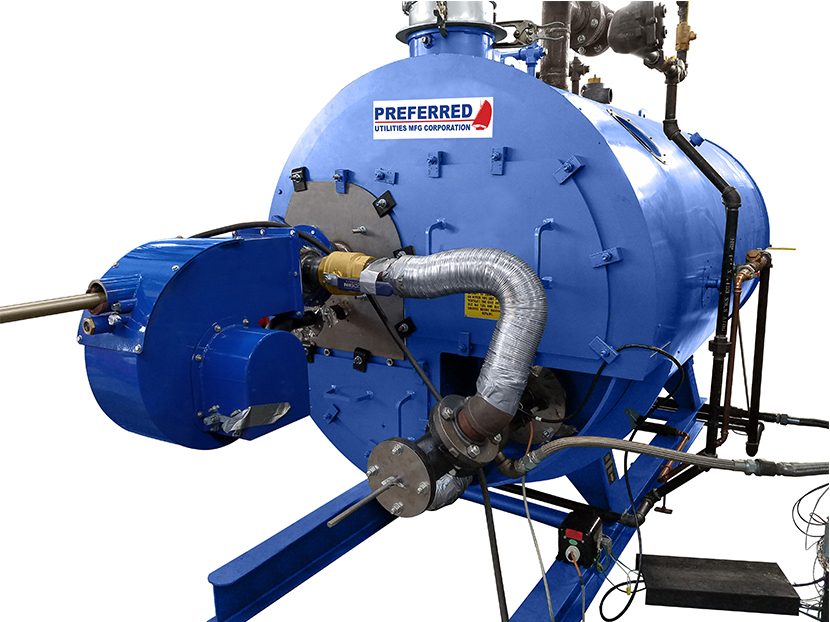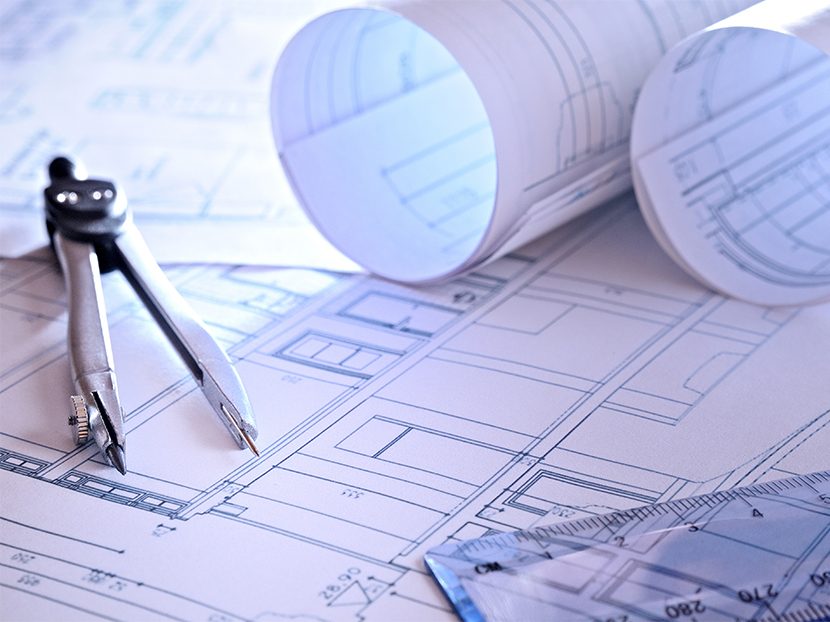Boiler System Design
A rundown of the major ways to improve the sustainability of a boiler system.










The idea of sustainable boilers may seem odd at first glance. Boilers have been around for a long time and the technology is very mature. There are many boilers on the market, but, the differences between them are relatively small. Changing boilers is unlikely to yield large sustainability gains.
However, if we expand our focus to boiler systems, things become more interesting. Viewing the totality of the system applies to plumbing engineers as they are really systems engineers. That said, choosing the right components for the boiler system can have a dramatic impact on efficiency, emissions, and overall sustainability.
A few key components have an outsized effect on sustainability: the fuel source, the burner, and the control system. What's more, there have been exciting breakthroughs in each of these technologies recently.
Fuel source
Perhaps the biggest contributor to the overall sustainability of a boiler system is the fuel source. Different fuels have different emissions profiles and inherent efficiency limits. These differences can be ameliorated to some degree by burner and controller technology. Still, all things being equal, natural gas will burn cleaner than coal or heavy oil.
But if we're talking about sustainability, emissions don't tell the whole story. Natural gas, heavy oil, and coal are all non-renewable fuel sources. In the long run, this means these fuels are unsustainable in an important sense. Sustainable fuel means renewable fuel. For practical purposes, that means biofuel.
Traditional biofuels
Currently the most popular biofuels are solid-mass fuels such as wood chips or pellets. Aside from being inherently more sustainable than non-renewable fuels, switching to solid-mass biofuel can bring impressive reductions in CO2 and nitrous oxide (NOx) emissions. Switching to solid-mass biofuel generally requires replacing the entire boiler system, including controllers, burners, pumps and boilers. For large institutions, this can mean upfront investments of $10 million or more. Additionally, storing wood chips or pellets requires a large amount of space. For many, these considerations make solid-mass biofuel either impractical or cost-prohibitive.
Liquid wood
In the past, solid biofuel was the whole story, but there is an alternative: liquid wood or bio-oil. In a process known as pyrolysis, wood heated in the absence of oxygen can be converted from a solid into a liquid. The basic chemistry has been understood for more than 100 years, but until recently the product couldn't be burned in a commercially viable way. However liquid wood is now available (particularly in the Northeast through a major supplier in Canada) and priced competitively to natural gas or oil.
Liquid wood behaves essentially like traditional fuel oils in the boiler tank. As a result, retrofitting existing boiler equipment is typically all that’s required to burn liquid wood. This is a cost-effective way to dramatically decrease conversion costs compared to other biofuels (in some cases by a factor of 10). In addition, storage needs are not substantially different from traditional fuel sources. Liquid wood does require some equipment upgrades because it must be burned at very specific temperatures and pressures. Engineering companies struggled for many years to get these systems right, but they are now available and commercially viable.
Aside from being 100 percent renewable, liquid wood has another major benefit: it is vastly more carbon-efficient than traditional fuel sources. This is because the CO2 emissions of burning liquid wood are largely offset by replanting the trees used to produce the fuel. On average, liquid wood is 88 percent more carbon-efficient than petroleum fuels and 81 percent more carbon-efficient than natural gas.
Any institution looking to reduce its overall carbon footprint should be looking seriously at liquid wood fuel for its boiler systems. Indeed, several New England universities have made the switch and are reaping the benefits.
Burners
Although important, carbon-dioxide is just one among many harmful components of boiler emissions. Another major sustainability consideration is nitrous oxide (NOx) emissions. NOx is responsible for "smog" in the air we breathe, and is a well-understood and documented public health threat. Because of these well-known risks to public health, the EPA has set National Ambient Air Quality Standards for NOx concentrations in the atmosphere. Alarmingly, recent studies have shown that more than 50 percent of U.S. counties do not meet these standards, constituting a major public health threat.
To combat the problem, state agencies have been setting tighter and tighter regulations on NOx emissions. California has been the most aggressive and currently has some of the strictest regulations in the country. While most states are moving more slowly, the trend is clear: ever-tightening requirements on NOx emissions.
NOx concentrations from older natural gas burners already don’t meet regulations in many states, and many newer burners are unlikely to meet tighter regulations we expect in the future. To meet these emerging standards, many facilities will be forced to replace older burners. Replacing a burner, however, is expensive, and there is a major concern: if a new system is installed to meet new regulations at, say, 20 parts-per-million (ppm) NOx, what happens if standards tighten to 14 ppm a few years later?
Ultra-low NOx burners
One solution is to opt for an ultra-low NOx emissions burner. Many of these burners can achieve emissions around 9 ppm — more or less the theoretical physical limit. Presumably, states won't ever require NOx emissions lower than physics allows! So, this approach certainly will future-proof a boiler system. But there are downsides. Because lowering NOx emissions means using more electricity and a drop in system efficiency, operating at the theoretical lower limit can be substantially more costly than required by current regulations.
Additionally, most low-NOx burners are so-called "diffusion systems," requiring flew-gas recirculation (FGR). FGR requires more flow to fans, and can mean a substantial increase in both electrical and horse-power requirements (which, of course, means higher costs).
An alternative to FGR systems are "lean premix" systems. Unfortunately, these systems have downsides of their own. Their burner heads are generally made of a fragile, metal fiber mesh. These heads have a high failure rate as the mesh easily clogs. Additionally, they require air filters that must be regularly changed. In practice, routine maintenance gets missed. As a result, actual NOx emissions rise, putting the systems at risk of violating regulations.
Configurable NOx emissions burners
There are new burners that ameliorate all of these problems. Cutting-edge lean premix systems use solid stainless-steel heads and don't require air filters. This means less maintenance and more reliable operation at specified NOx levels. Additionally, these burners have NOx emissions that can be configured on the fly. That means that a facility can set burners to meet current NOx levels, confident in the knowledge that should regulations tighten further, getting in compliance simply means a minor reconfiguration to its existing system.
Control system
We have looked at two major components of boiler systems and their impact on sustainability: fuels and burners. There is another, easily overlooked component: the system controller. When married with proper fuel- and air-flow regulators, the controller’s job is to make sure that fuel- and air-flows are matched to maintain the correct fuel-to-air ratio at all times. This ensures accurate and repeatable combustion control.
Manufacturer-quoted efficiency and emissions statistics for burners assume correct fuel-to-air ratio. Those in charge of boiler systems are often surprised to find that their outdated controller cannot reliably maintain this fuel-to-air ratio, and that their systems are in fact operating at lower efficiency or with worse emissions than expected.
As a result, the first and simplest step to improving sustainability is often upgrading to a modern controller. In fact, many facilities should be thinking about new controllers anyway: the once standard Siemens/Moore 352 and 353 controllers reached official end-of-life in October of last year.
A simple solution is to look at a modern, programmable loop controller that can serve as a drop-in replacement for those old Siemens controllers. Look for features like SD card slots and retentive memory to make maintenance both easier and less frequent. Remember — actual maintenance tasks are often missed, so systems that require minimal maintenance are more likely to be operating to spec.
Besides simple loop controllers, there is an interesting new option: flexible systems controllers. A flexible systems controller is decentralized. Each component in the system has its own independent logic controller. Additionally, the best of these new systems connects each component with two redundant cables. This eliminates the single-point of failure concerns in centralized logic controllers.
More importantly for the present discussion, it makes maintenance and troubleshooting far simpler. Each component can have its own touch screen that can access and control any other component in the rest of the system. Technicians can conveniently monitor and fix issues from anywhere. This means more reliable and maintainable operations, which translate into sustainability gains.
Systems controllers have come a long way in the last few years, and with them the potential for increased sustainability, along with lower costs due to increased efficiency.
System design is king
Changing the fuel source, burners, and systems controllers are the three major ways of improving the sustainability of a boiler system, however a boiler system is more complex than these three elements. There are pumps, day tanks, regulators, and myriad of other components. Efficiency and sustainability improvements can be had at every point. Thinking of the system as a whole is the best approach to improving boiler sustainability.
Finally, because each of these components is part of a system, the best approach may not be to find a parts manufacturer to supply particular components for upgrade. In many cases, it can be far more effective to work with an engineering firm that also manufactures parts. A firm that itself specializes in system design can best advise on which components might best be upgraded in a particular system and what other changes such an upgrade might require.




